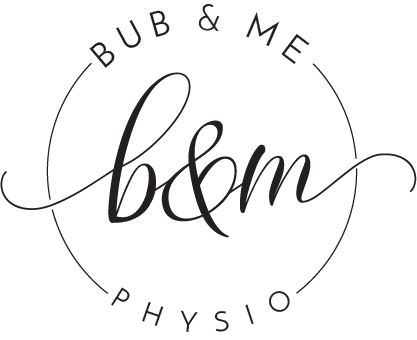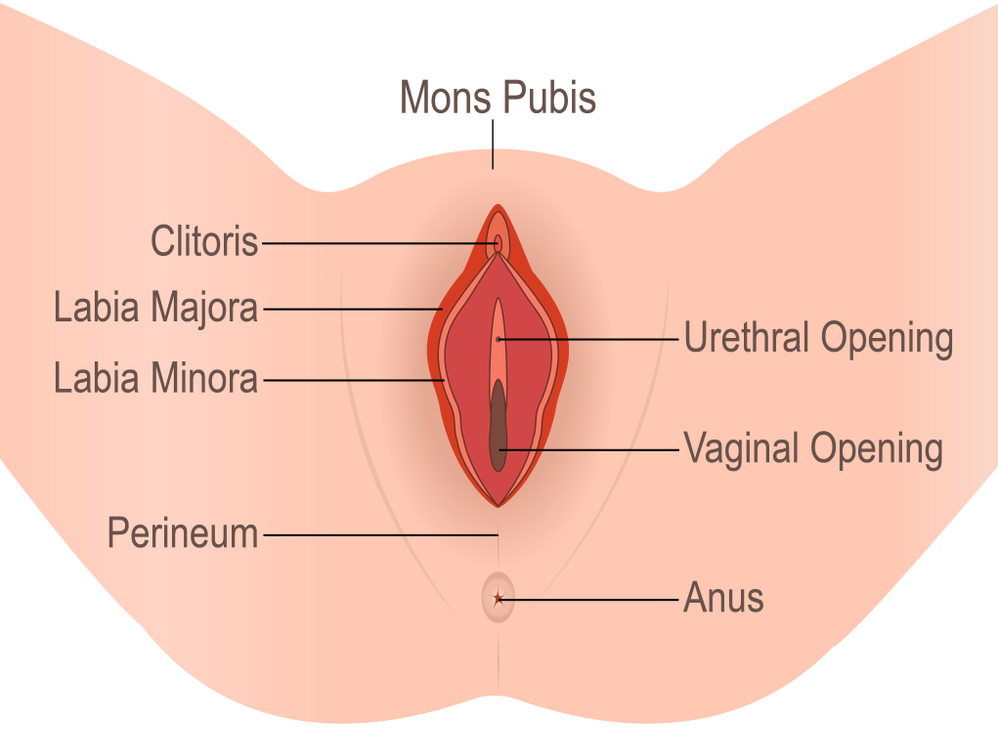Perineal massage, EPI-NO or a no-go!?
That’s it! You’re pregnant, it’s happened! Congratulations! You start thinking about where the baby room will be, what it will look like. Excitement sets in - you get to start shopping for baby clothes and bassinets! You go into planning mode and enrol in Bub & Me’s prenatal exercise program to stay strong and injury-free during your pregnancy, and to help you prepare for labour. You start researching how to achieve a smooth labour and delivery, about different ways to push (read that blog!) when you’re in the second stage of labour and what you can do to empower yourself to have your desired birth.
And in the process you come across the recommendation to do perineal massage or use an Epi-No. What? You might find the idea a bit confronting, that wasn’t how you imagined spending the last couple of weeks of pregnancy.
So let’s talk about it. Why should you do it, what are the benefits and what are the risks.
What is the perineum:
The perineum is the area of skin between the vagina and the rectum. During childbirth, your perineum and pelvic floor muscles will be greatly stretched and can tear, or you may be cut in a procedure called an episiotomy (to enlarge the space for the head to come through). The risk with any tearing or episiotomy is that it can lead to pelvic floor defects, reduced sensation, urinary incontinence, or incontinence of stool or flatus (Viswanathan, M., et al 2005).
The premise of doing perineal massage or using an EPI-NO in the lead up to delivery is to:
Increase blood flow to the perineum and help the tissues and skin stretch with more ease and with less pain during childbirth.
Lower the risk and severity of tearing
What is perineal stretching/ massage?
Perineal massage is performed by you or your partner to stretch and desensitise the tissue around the opening of the vagina. It can help to familiarise you with the sensation of your perineum stretching, and decrease the stinging during crowning, allowing you to focus on relaxing during childbirth. It also helps prepare the tissues and reduces the risk of tearing during crowning as well as reducing perineal pain following delivery. You also don’t need any equipment (except maybe some lubricant and a clean set of hands) and better yet, it’s free! We have a whole blog written about this technique.
What does the research say?
The research on perineal massage is quite strong, and there are no known negative effects, which is why most midwives and obstetricians will recommend that you do this if you are planning a first-time vaginal delivery. It has been shown to have a significant impact on the reduction of the need for episiotomies and the duration of the second stage of labour (yes, that’s what we want to hear!) (Akhlaghi et al., 2019; Demirel & Golbasi, 2015). In addition, if you perform perineal massage during pregnancy, and your midwife uses a warm compress on the perineum during crowning, this may further reduce serious perineal trauma (Aasheim et al., 2017).
What is the EPI-NO?
If you haven’t heard of an EPI-NO, it is a balloon attached to a dial and a small pump, and it is used to prepare the perineum for childbirth by gently stretching it in order to reduce the risk of severe perineal injury, much like perineal massage. It can also be used throughout your pregnancy and after birth as a bio-feedback tool, to train and strengthen your pelvic floor muscles, and to learn to relax them.
In the last three weeks of pregnancy, you slowly inflate the balloon to stretch your perineum, helping to prepare these tissues for birth. by using it for perineal massage. By stretching the perineum and learning to yield against the discomfort, you will become familiar with the sensation of birthing your baby.
At the time of writing this blog, purchasing the EPI-NO costs $189.
What does the research say about the EPI-NO?
Using the EPI-NO does reduce the need for episiotomy and perineal tearing, but hasn’t been shown to reduce the length of the second stage of labour (the pushing). There is mixed evidence available regarding the use of the Epi-No and more studies are needed to further evaluate its effectiveness (Brito et al., 2015; Kavvadias & Hoesli, 2016). It may, however, be useful to help prepare for birth as a pelvic floor training tool, in combination with perineal massage. The big concern is that we have no long-term studies looking at pelvic floor health following the use of the EPI-NO.
Still unsure whether or not to consider perineal massage/stretching, answer these questions:
Is this your first birth?
Are you planning a vaginal delivery?
Do you want to reduce the risk of perineal trauma?
If you answered yes to these questions, we recommend that you start perineal massage from 34 weeks of pregnancy. See a women’s health physiotherapist or ask your midwife if you are unsure how to start this. If you’d like to try the Epi-No, at this stage we recommend that this be done in combination with perineal massage due to the lack of evidence for use of this device on its own. Remember to always consult your treating health professionals prior to starting something new in pregnancy.
One of the best things you can do to prepare for labour is to participate in our physio-designed prenatal exercise program. Our Strong Mama program will guide you, week-by-week, through your pregnancy, helping prepare your body for birth.
P.S. Make sure you also read our blog ‘Tips to Reduce Tearing During Delivery’!






